959 to Cayenne: Tracing the Bloodline of the Modern Porsche
One can argue that Porsche’s modern era kicked off in 1985, with the debut of the 959. What started as a complex, tech-heavy pursuit of Group B rally glory ultimately yielded the most advanced supercar yet seen on the road. And it founded a lineage that later included the 911 GT1, Carrera GT, and 918 Spyder. Less recognized, however, is the link between it—an unprofitable ‘80s moonshot—and the brand’s 21st-century commercial success. Whether Porsche’s ardent air-cooled enthusiasts like it or not, that line traces straight through an unlikely hero car: the Cayenne SUV.
The 959 forever altered the automaker’s approach to cutting-edge technology. Its development armed the company with essential knowledge and expertise that, unbeknownst to the racing engineers working on it, would make sports-car-focused Porsche into one of the world’s most successful makers of luxury utility vehicles. The Cayenne’s success in the early 2000s, by many accounts, built the company we know today.
Rally beginnings
In the 1980s, however, Porsche’s goal for the 959 was to create a dominant Group B rally car, and, via homologation, re-establish the 911’s image after the 928 proved an unpopular successor.
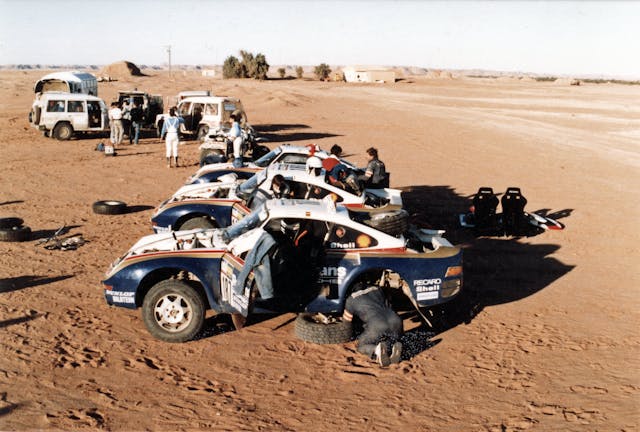
Group B’s wide-open rule set encouraged bleeding-edge tech, which resulted in participants employing ever more complex systems in pursuit of victory. Most memorable in this arena was Audi’s Quattro system, which forged that company’s identity and proficiency with all-wheel drive as the brand expanded worldwide. Porsche sought the same route, choosing to lean heavily on innovation for its halo car rather than tried-and-true performance-enhancing regimes like shedding weight (Ferrari F40) or brute force (Lamborghini Countach).
Quattro let Audi rule the Group B roost after its introduction in 1980. Other competitors weren’t lacking in successful recipes, either—Lancia’s brutally quick Delta S4 used a supercharger paired with a turbocharger to reduce boost lag and pump out up to 1014 horsepower in full-wick competition spec. With these future adversaries in mind, Porsche found that its Type 930 Turbo’s engine simply wasn’t up to the task and returned to the drawing board. In order to hit performance targets reliably, Porsche fitted water-cooled four-valve heads to an air-cooled 2.8-liter flat-six block. And that complexity was just the beginning.
Porsche had experimented with similar systems for the 956 and 962 endurance cars, but those races prioritized higher engine speeds than ideal for rallying. For the 959, which would need equal parts low-end shove and high-end horsepower, Porsche landed on a solution: twin turbochargers equipped with valving that first engaged the left bank’s blower and then cut in the right side’s around 4000-4500 rpm.
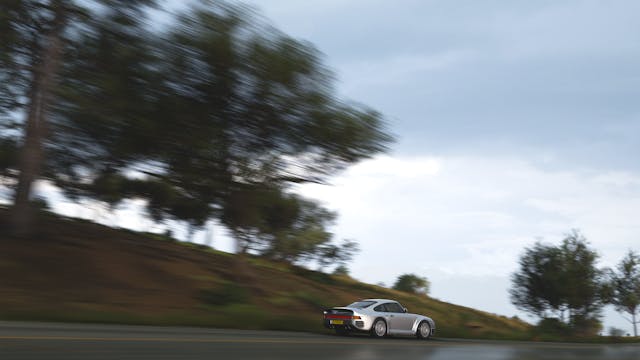
Final homologated ratings of 444 horsepower (SAE) and 369 lb-ft for the road-going 959 only tell part of the story, since 300 of those foot-pounds arrived by 3000 rpm with just the single turbo pushing boost. Competition cars reportedly ratcheted that output up to and beyond 600 horsepower. Effectively harnessing so much grunt on relatively primitive tire compounds required further innovations to Porsche’s existing drivetrains.
The 911’s up-and-coming G50 transaxle—which would debut in road cars for 1987—provided the 959 with two more gear ratios than with the 930 Turbo’s four-speed. It also permitted fitment of a multi-plate clutch system capable of electronically locking to send power to the front differential. Under normal driving conditions, an ECU estimated the car’s weight transfer by measuring the rate of acceleration based on engine output and gear ratios, then an algorithm determined how much torque the front and rear wheels should receive. (The driver or navigator could also lock all three differentials from the cockpit with the push of a button.)
That weight transfer also depended on the 959’s advanced suspension system. The 959 employed coil springs paired with electronically adjustable shock dampers, as well as hydraulically powered adjustable ride height pistons that allowed for the selection of 4.7, 5.9, or 7.1 inches of ground clearance. The dampers themselves used tiny motors to adjust valving that regulated fluid flow and firmness.
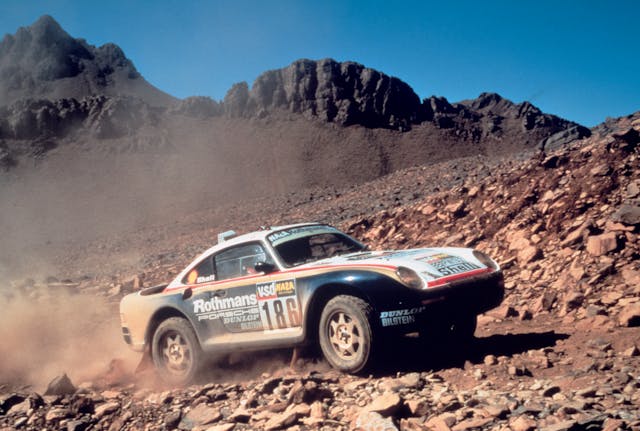
This drivetrain and suspension combination allowed the 959 to crawl over off-road obstacles with the chassis lifted as high as possible and while using an extremely short 3.50 “Gelande” first gear ratio. (Gelandewagen uses the same German word for “terrain.”) At the opposite end of the spectrum, with the suspension lowered and firmed up, the road-going versions of this rally racer set a new production vehicle world record of 211 miles per hour while achieving up to 0.87 g of lateral grip thanks, in part, to novel Bridgestone run-flat tires.
By the time the 959 approached anything near competition readiness, however, the FIA had already disbanded Group B due to a series of high-profile fatalities. Porsche pivoted, instead taking the new car to the Paris-Dakar Rally—quite possibly the most difficult racing challenge on Earth at the time. At this same event, in 1984, a highly modified 911 variant known as the 953 had proven quite potent. After an abysmal first year in 1985 (all three 959 entries dropped out), another 959 trio achieved a first-second-sixth finishing order in 1986. Porsche’s tech-driven supercar had proven its off-road racing cred and presented to the world a fresh take on how to build a halo vehicle.
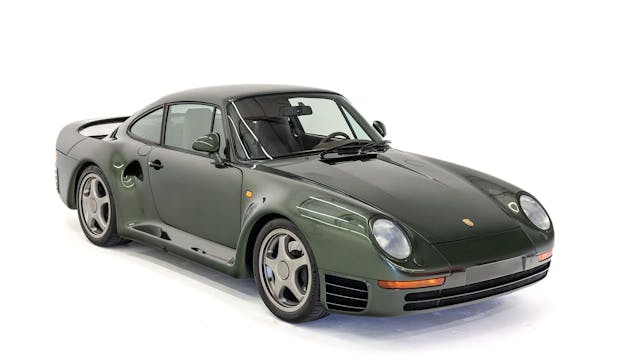
Porsche Pivot
After investing so much into the 959’s all-around capabilities, Porsche then began sprinkling those developments into its more pedestrian offerings. The 1989-94 964-generation 911 received a similarly complex four-wheel-drive system on the base Carrera 4, while the 1994-98 993-gen 911 Turbo then mated AWD to a pair of turbos capable of wringing 450 horsepower from a 3.8-liter air-cooled flat-six.
The ill-fated attempt to replace the 911 with the front-engine 928, along with struggling sales of the entry-level 924/944/968, left Porsche desperate to right its financial ship. The 964-generation 911, more or less a stopgap measure between the older G-body models and the eventual 993 generation, arrived in the midst of a weakened dollar-to-Deutsche Mark exchange rate. As seven years of 964 production crept by—with only 63,762 cars sold—Porsche knew it needed to pivot. As it began taking steps that would lead to folding the family firm into Volkswagen AG’s conglomerate, Porsche also began to evolve its product line.
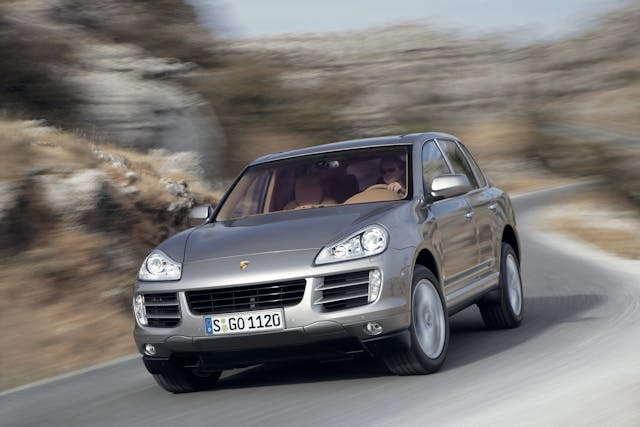
The 959’s use of water-cooled heads was a departure from the fully air-cooled engines that helped define the marque’s top cars, and they helped pave the way in the late-1990s for fully water-cooled M96 engines that ultimately powered the 986 Boxster and 996-generation 911. Component sharing and serial production during the new water-cooled era began to turn Porsche’s financial tide, but the company still needed more than a range of niche sports cars to remain viable in the 21st century.
Despite knowing that it would send purists into a fit, Porsche moved forward with its solution: creating an SUV. The existing BMW X5 and Mercedes-Benz ML-Class were already capitalizing on a new, growing segment of the American market, and Porsche was clear-eyed about the financial opportunity. Sharing a platform with Volkswagen’s Touareg and Audi Q7 would help spread the considerable development costs over a broader base and enabled Porsche to make this step into the new era, but the brand knew it’d have to spice up its offering with a more sporting identity to set it apart from its platform-mates and other competition.
To successfully imbue its personality and capability on- and off-road into the Cayenne, Porsche applied much of the same tech-heavy strategies it did with the 959. The Cayenne employed a dry-sump oiling system that mitigated oil starvation at odd angles while off-roading, a set of electronically disconnecting front and rear sway bars were available as part of the Advanced Offroad Technology Package, and the Cayenne Turbo model received an air suspension system that allowed for five positions of adjustable ride height. Sound familiar? Porsche’s predilection for, ahem, intensive engineering even resulted in water cooling for the Cayenne’s alternator.
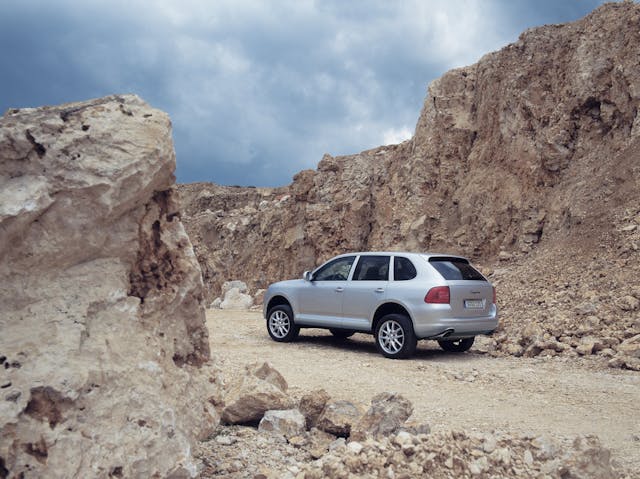
As with the 959, Porsche didn’t forget the influence of racing success on its customers. Also, the Cayenne, which was on its face a non-traditional Porsche product, stood to gain some credibility through success in motorsport. With that, Porsche focused on the 2006 Transsyberia Rally, a 10,000-kilometer-plus event that ran from Berlin to Moscow, then across Russia and Mongolia.
At the event, Cayennes equipped with minimal modifications—shorter final-drive ratios, intake snorkels, and safety equipment—took first and second place. Those race vehicles even used the Turbo’s adjustable air suspension system rather than steel springs, demonstrating Porsche’s faith in the durability of its solutions.
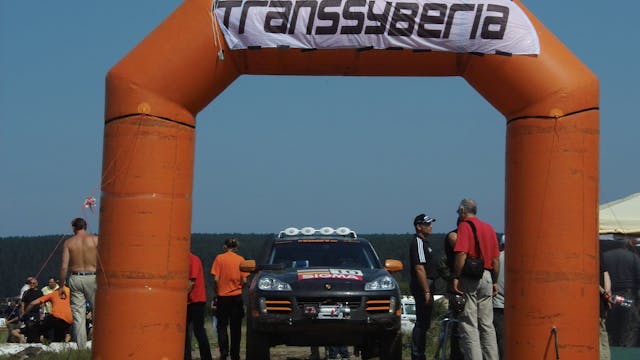
Not since the 959 did a Porsche model exhibit such a broad performance envelope. And with that win, the brand executed its objective of creating an SUV on its own terms. Period reviewers, who weren’t particularly warm to SUVs as a whole (some of us are still coming around—Ed.), acknowledged as much, though they wished for a greater degree of on-road sporting characteristics and lamented the Cayenne’s weight, which, at over 5000 lbs, was a consequence of its complex engineering. Dan Neil, writing for Car and Driver in its August 2003 issue, put it thusly: “It is the fastest production SUV on the planet, and it has more off-road chops than Sir Edmund Hillary. It’s sure to be a huge status codpiece in South Beach and Beverly Hills. It is the ‘Porsche of SUVs.’ We had hoped for a little more Porsche and a little less SUV.”
While the automotive press may have couched its praise for the Cayenne with caveats, the SUV seemed to suit the public just fine. Porsche sold 20,603 Cayennes in 2002, and 2003’s 39,913 sales equated to more than 52 percent of Porsches produced that year. The company hasn’t looked back—together, the Cayenne and its mini-me Macan sibling are the brand’s sales leaders. Their massive success, many argue, ensures continued investment in low-volume sports cars like the 918, GT4 718s, GT2/GT3 911s, and 911 S/T.
Had Porsche not gone down the Group B rabbit hole, history could have unfolded very differently. When it came time to create its first SUV, the company already possessed the experience, the technological chops, and the ingrained engineering approach to build a multi-purpose, all-wheel drive vehicle that didn’t just genuflect at the “Sport” in Sport Utility Vehicle. The 959 forged a new competency for the brand, and the Cayenne leveraged that success into a profit machine. It may not appear so on the surface, but the 959 and the Cayenne are cut from very similar cloth.
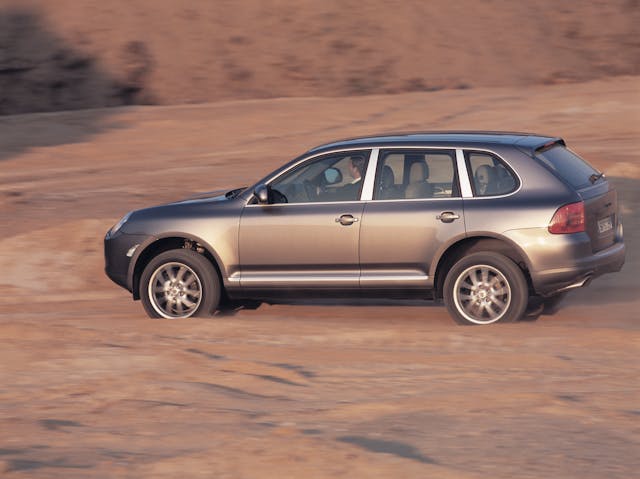
***
Check out the Hagerty Media homepage so you don’t miss a single story, or better yet, bookmark it. To get our best stories delivered right to your inbox, subscribe to our newsletters.
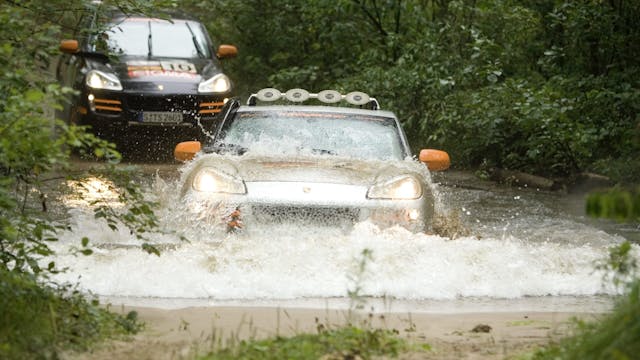


In 2011 I bought a 2008 Cayenne S. It is the perfect daily driver. Driving in the winter through new England storms for the past 13 years has been without incident. Its not even a challenge. Driven round trip NH-WI-NH several times with no issues. There is a flip side to my love affair. I cannot remember when there was not something amiss with it and Porsche repair costs are something truly amazing. Really, over $ 1,600 dollars for an oil/filter change and new plugs. At present there are two things needing a fix. The date shows Aug 8th, 2004 and it cannot be set in the display. Been waiting for many years for a fix. Also, I keep on getting message to check headlight beam adjustment. Been told that the wiring harness is causing this. At over $ 1,500 plus installation for a new harness I will continue to ignore the message. Headlights seem fine, its the message I find to be the problem.
The 959 is still one of my favorite cars of all time. It took quite awhile to warm up to the Cayenne for me.
Take the “money” out of the picture…………….do you honestly think Porsche wants to make trucks………….and YES, an SUV is a truck.
Nothing worse than being in the local PCA or at a car show and you get stuck talking with the “new”, first time Porsche owner and his Cayenne or Macan…………NOT A CLUE!
Excellent article. I did not appreciate the intrinsic connection of the 959 and the Cayenne. Now I do.
To the Cayenne and 4-door haters out there: You cannot ignore the significance and the success of the Cayenne and the Macan. More than the obvious financial impact, i.e. sales and profit, the 4-doors have brought so many new owners and drivers to the brand. The long term benefit of that brand growth brings life and vitality to Porsche which is critical to survival.